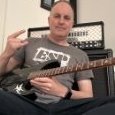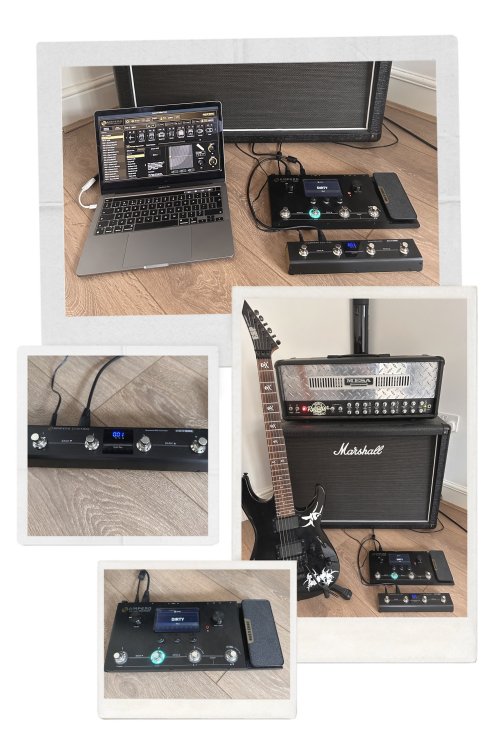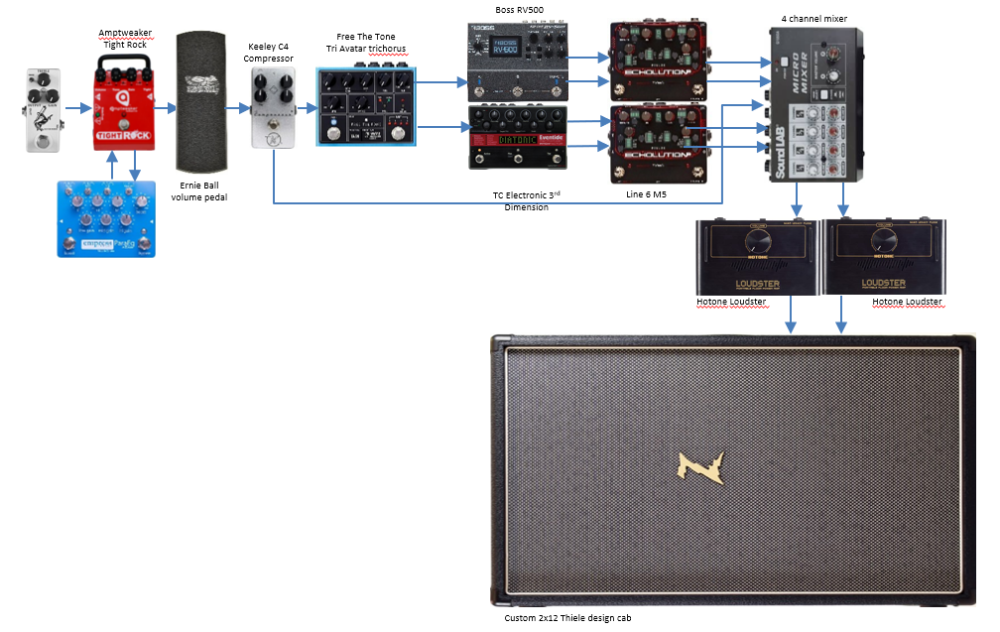Leaderboard
Popular Content
Showing content with the highest reputation since 09/06/25 in all areas
-
A common mistake is for folk to stick to the minor pentatonic when improvising, whether the key or chord is major or minor. Try and make sure you’re complimenting the chord by emphasising the 3rd note. A lot of players tend to play through the scales from one end to the other. Stand out from the crowd by making some interesting, intervalic jumps (Carl Verheyen is the king of this, check him out). Don’t be in a hurry to show your chops too early, build to a crescendo and release (the solo from Stairway is a great example of this).2 points
-
Wouldn't surprise me. The older I get, the more I realise 99% of the electric guitar market is about selling branding an intangibles far over the actual, physical product. It does seem to vary by location, though: players in the US on average still seem to be much more likely to be emotionally invested in the idea that a guitar made in the USA *must* be superior, or is somehow otherwise "the real thing". Which I suppose shouldn't be surprising given that's where the electric guitar boom started, and so there's a sense of "loss" that those aren't dominant in the market any longer - as opposed to being "only" another import product as they are for us in the UK.2 points
-
Maybe 'A', certainly not 'I'.1 point
-
I wondered if it was AI.1 point
-
Just on the frontier between Spam and Troll. I've left it for now, but it's on a knife edge.1 point
-
1 point
-
Yep! Therein lie the important chord tones, which will add flavour to your soloing.1 point
-
Look at barre chord shapes and use those notes as a guide to what to play, then experiment with different positions up and down the neck. Then, if you're brave, try it with inversions and THEN with modes. See how far you can push things without it sounding irrelevant.1 point
-
1 point
-
OK I think I've reached the end of the road with this one. Or at least I've gone as far as I can... The Ernie Ball VP Jr arrived and works great although there isn't enough space on the already quite generous pedal board for it. Over the weekend, I also discovered someone selling Eventide Pitchfactor for about 230 quid online and so pulled the trigger because it does Eventide Harmoniser detune. So that has replaced the TC Electronic 3rd Dimension. And a second Pigtronix Echolution arrived as well but I may have actually over cooked it a little because just one can handle stereo AND both the RV500 reverb AND the pitchfactor have delay as well...hmmm. Slight buyers remorse perhaps. The only thing left in the set up is another pair of Loudster power amps which I'm in no hurry to buy right now given the Marshall power amp does the job adequately for practice purposes. I'll post a pic of the actual pedalboard once I've finished the re-wiring. Now I should probably go and learn some songs...1 point
-
Like countless others outside the UK, I've been drawn to and subsequently obsessing over the clean tones that were achieved by in demand US session guitarists in the eighties and early nineties. While Michael Thompson was perhaps best known for his clean tone, Dann Huff appeared on countless Top 10 recordings that featured his lush stereo swells including tracks by Peter Cetera, Amy Grant and others. Part of that sound was down to his rack of effects often involving a Mesa Studio preamp into a Songbird trichorus, then stereo with one side going through an Eventide Harmoniser and Roland SDE3000 or Lexicon delay, the other side going through a Lexicon reverb and then another delay. However another part of his sound involved a highly modified 64 strat c/- Jim Tyler which featured Seymour Duncan STK2 pickups in middle and neck plus a JB (SH4) humbucker in the bridge AND...a Tyler mid boost circult which also sparkled up the presence a bit as well. So I'm going to recreate his 64 strat, including making the midboost circuit. I've nearly assembled all the parts, however I had to trash the cheap neck that was going to be used after I discovered that it had warped into an S shape and whoever made it cut the fret slots at ninety degrees to one side of the fingerboard...DOH. Luckily it was only 30 quid but still...a replacement, fully painted, is on the way. Also, the pickup seller sent a TB5 custom instead of the TB4 (trem spaced version of the SH4) but the replacement has arrived. And finally, the series parallel pickup switches that arrived were on-off-on when I ordered on-on. So waiting for the replacements to arrive from a different seller.1 point
-
It’s odd, I’ve always hated the look of Telecasters. I went into the local shop looking for a Stratocaster, preferably white with a maple fretboard. They had three that matched and all were between £100 and £150, which was fine because I am no guitarist… £360 later, I came out with one of these: And I love it! Not enough to leave it alone, though. I’ve already changed the bridge saddles to Gotoh, brass, compensated barrels. Which I think look a bit nicer.1 point
-
Thank you! From what I had read 1:18 seemed to be what I thought I would need, but I don’t know what the ratio of the current tuners are, and my muggy head didn’t think of simply doing what you suggest… So now I have a place to start with the tuners. As for gilding the lily, I’m doing it because I like doing it. It won’t cost me much. I think the pickup set is less than £30. I can’t remember what the switch costs. I have everything else already. It’d be nice to have a humbucker as the bridge pickup, being able to split it should, I hope, mean I get to keep the Telecaster twang. I like the idea of the versatility. Being able to go from playing Reba McEntire to Metallica (or, more lately, Rocky Horror Picture Show tunes) without having to change guitar, would be handy!1 point
-
So, as you're doubtless aware, the people behind the original Klon Centaur: are suing Behringer, for the Behringer Centaur: It's going to be interesting seeing how this pans out. I think they'll win - or Behringer will back down - change the name and colour. Most legal cases settle before they get close to court. This one is interesting because the Klon hasn't been in production since 2008. They now routinely sell for four to five grand when they do come up for sale, hence the vast army of Klon clones that have been on the market for a long time. The Behringer pedal is just the very latest version of this, albeit - depending on opinion - blatantly or just more honestly a knock off of the original. I'm not entirely sold on the ethics of this lawsuit, given it's a product that has been unavailable for so long, and they appear to have no intention to bring it back into production. But it is what it is. The intriguing knock-on is what it has done to the second hand market for the Behringer pedals, which are now all over ebay for £500 and upwards. Full disclosure, the lawsuit announcement a couple of weeks ago finally prompted me to get around to ordering my own Behringer Centaur from Thomann. It was on back order, and has now shipped today, so it's going to be interesting to see what I get. Will it be the original knock-off style, or a new, altered version? TBH, if I was sure it was the original, at the prices they're now going for used, I'd have ordered half a dozen and sold most of them on... Could have funded a very nice new guitar that way! Eh, well. Welcome to the era of Lawsuit pedals!1 point
-
1 point
-
I bet that very subtle change in the graphics really pisses Klon off, which makes me smile.1 point
-
It's fascinating how commonly cloned the Klon is, down to its legendary status. Any number of them out there, really. I got an email in yesterday telling me my pedal from Thomann is now on the way - we'll see if it's the original version or something new. I kinda wish I had ordered a few now! According to online reports, this is the new version (which may be what I'll receive): https://guitarbomb.com/behringer-rebrands-klon-clone-centara-overdrive/ Same housing, slight change of name and logo. It strikes me with some amusement that if this doesn't settle the lawsuit, this could become an even rarer version (maybe we should bot order more of them.... if I had an original couple of Klons now, I'd be selling them to buy a Gretsch!). Legalities aside, it still feels to me that Klon are taking the piss suing over an albeit very close lookalike of a pedal they've declined to put on the market for seventeen odd years....1 point
-
I think Behringer just got a little too close to the original design. I am very much a fan of Behringer, by the way. I ordered mine from Anderton’s, as it was the only place that had them in stock, two days before the lawsuit was announced. I told my wife that they would start being worth more because of the lawsuit, and the lack of stock in many places (Anderton’s were the only ones that had them in stock and not back order) but that was to justify buying it… I had no idea that the prices really were going up. Maybe I should have ordered two? I certainly won’t be selling mine, it’s a excellent pedal. I suppose, what I could do, is build my own (which had always been the plan before the Behringer came out and all the massively positive reviews for it), and if it’s close enough, I could sell the Behringer.1 point
-
Hi fellow musicians. I've been playing the guitar for over 40 years. I taught myself to play. I have been in a couple of bands gigging. I am rhythm but have picked up a lot of lead from Gary Moore tracks, by ear. My first guitar was a 1986 Fender Telecaster. I paid 199 quid for it. As the years have gone by, and as you do, I have collected a couple of Epiphones, couple of Fender Strats and an Ibanez and Fender acoustics. I do have a question around octave pedals. I have bought three so far and they all drop down an octave. What pedal takes you up an octave? I play the light E string 12th fret but Gary plays on the G string which is normally an octave lower. It does make a difference to the sound of the note.1 point
-
Hey folks, Here’s a short original I composed for classical guitar, called “Wait.” Wrote it during an anxious time — waiting to hear if I was losing my day job. The tension shaped the piece, but there’s a thread of hope in there too. Hope you enjoy. Video Tabs Cheers, Mikko1 point
-
Steady on, it's not like some of them need extra reasons to slap a premium on a five quid set of parts.1 point
-
1 point
-
I have the Silver Horse and would recommend it for anyone wanting an alternative boost to a TS. However I'm using an old Xotic AC Booster for that function these days, there's slightly more harmonic saturation available.1 point

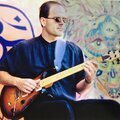
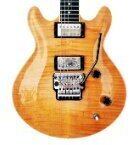
.thumb.jpg.2f0f241a63381e5644f287abacd76760.jpg)


